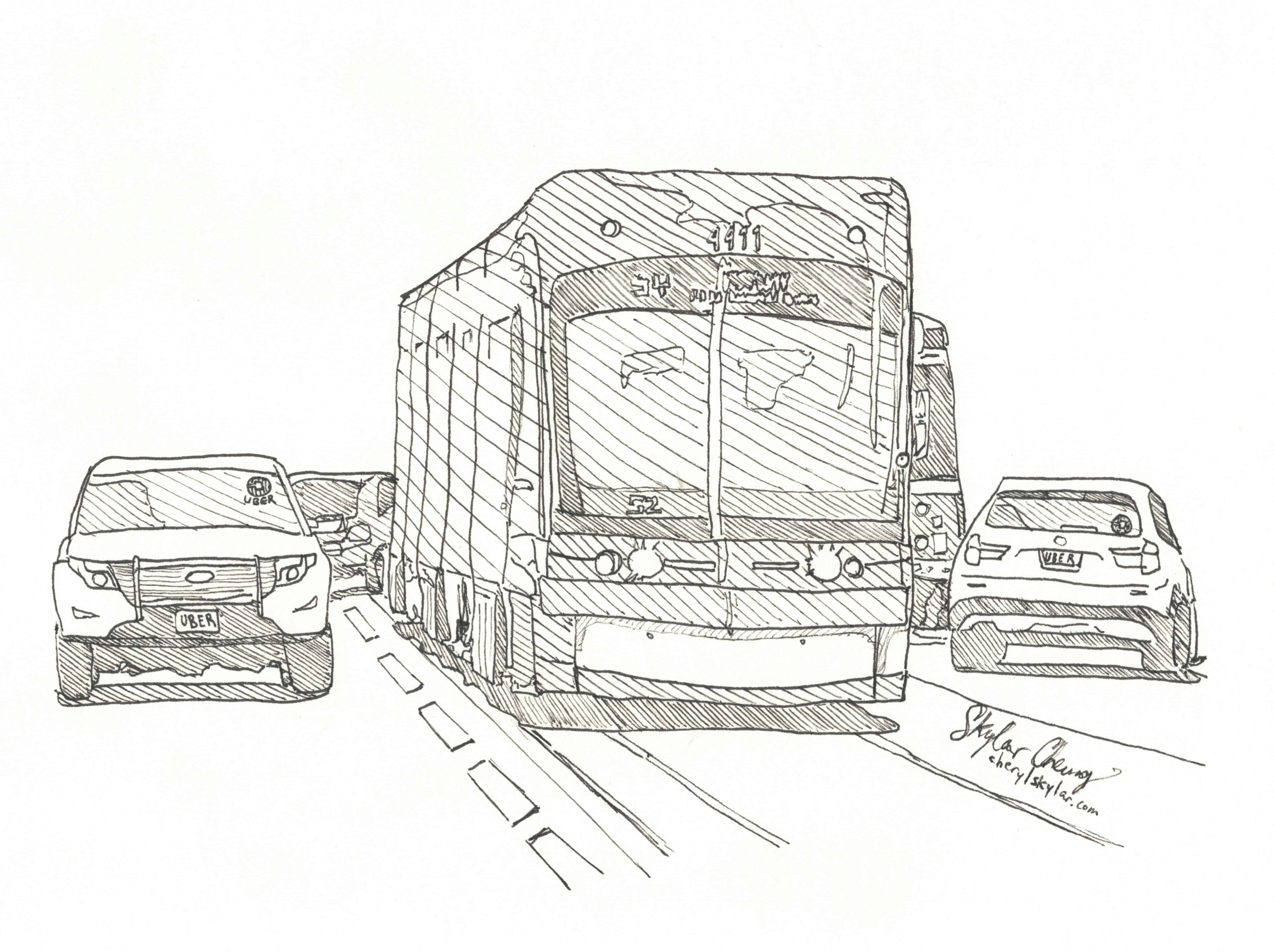Uber’s presence in major cities is prompting growing concerns among residents, particularly over how the ridesharing tech giant impacts the urban landscapes in which it operates. Issues from taxi drivers’ job stability to Uber’s effects on public transit usage have largely yet to be properly addressed.
To begin to understand Uber’s impact on cities, Jonathan Hall, Assistant Professor in U of T’s Department of Economics, recently published a study in the Journal of Urban Economics examining the relationship between Uber and public transit.
The paper, entitled “Is Uber a substitute or complement for public transit?,” aimed to find whether Uber’s entry to a city makes public transit ridership increase or decrease.
This could be essential information for cities planning transportation budgets and for predicting traffic density. Most importantly, according to the paper, “if Uber increases transit ridership this would then increase the efficiency of the public-transit system.” This could lead to lower costs for the transit agency and shorter ride times for commuters.
Hall and his co-authors, Craig Palsson and Joseph Price, used Uber penetration data and data from the National Transit Database, which records every transit ride of nearly every transit agency in the United States. This data is collected from 196 Metropolitan Statistical Areas (MSAs) in which Uber operates.
Hall and his colleagues concluded that Uber is a complement to public transit, rather than a replacement. Two years after entry, Uber’s presence can cause a growth in transit ridership of up to five per cent.
The reason for this complementary effect can be found in part in the faults of public transit. As per the paper, “It is Uber’s ability to fill in the holes in public transit coverage, substituting for particularly bad transit trips, that allows Uber to complement transit overall.”
Often, the majority of time taken during short-transit trips is taken up by getting to and from the station. Uber’s ability to eliminate these first and last portions of a transit trip to efficiently complete the main portion allows the two services to be complementary of each other.
The effect, however, is not consistent across transportation methods or environments. The paper explained that “Uber reduces transit ridership in smaller MSAs while increasing ridership in larger cities.” As such, the development of policies regarding Uber should consider the preexisting state of public transit in a given city.
Furthermore, there is a difference in the impacts between transit ridership for rail and bus. In an interview with The Varsity, Hall said that this was the most surprising result of the study. “What I thought we’d find is that Uber hurts buses and helps trains… because buses are slow [and] usually bus trips are shorter compared to train trips.
“The logic is very compelling to me. But that’s not what we found and they don’t let you make it up,” said Hall. Instead, Hall’s research found that Uber’s impact on train and subway usage is inconsistent across different locations.
The major limitations of the paper are in the timeliness of its results. According to Hall, “transit ridership in the US is falling. It’s falling as though there’s a recession — there’s not a recession. So, blaming Uber seems like a natural place to start. Our study finds that is not the case. But our study… doesn’t go to the present day.” This specific issue is inevitable, as data is rarely available contemporaneously.
Although it is difficult to know what is truly causing this current decline, Hall’s paper will help shape future discourse around innovation in transit and its impact on urban environments.


